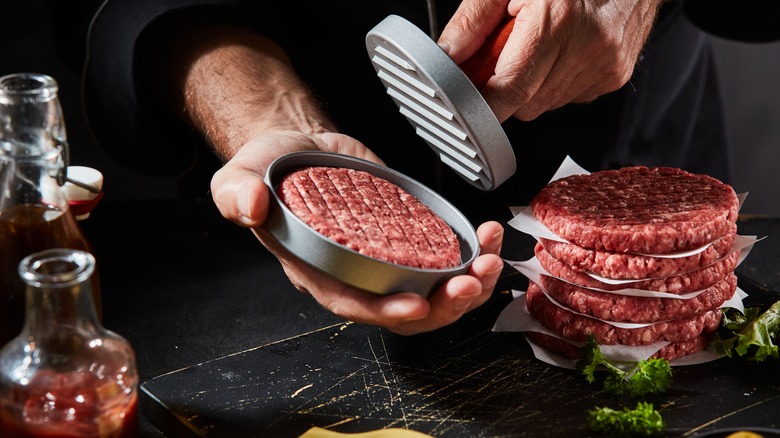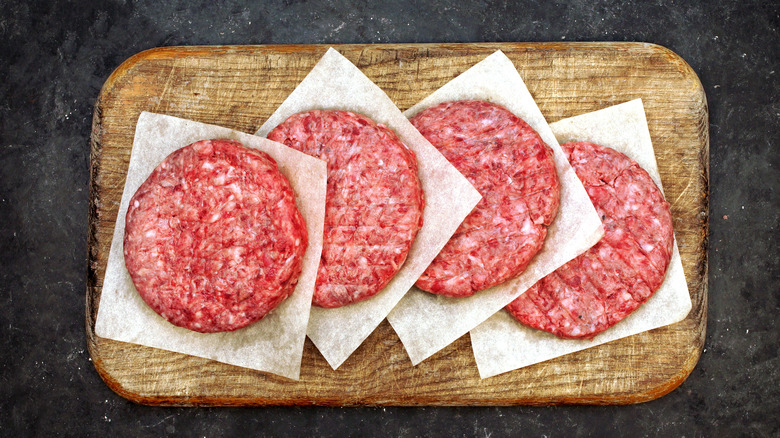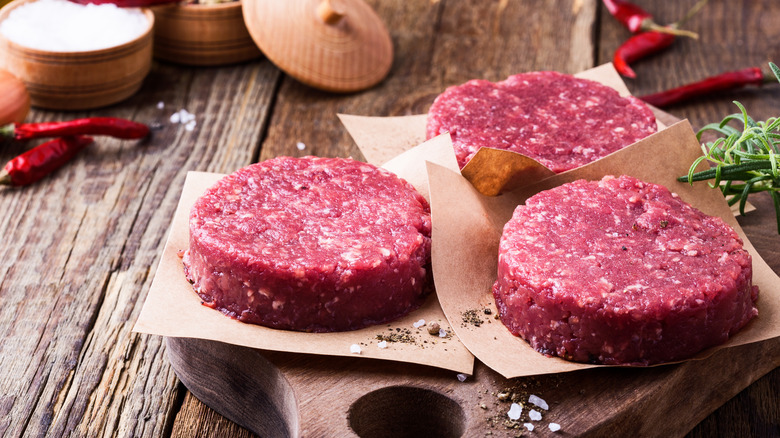The Best Type Of Beef For Juicier Burgers
At the heart of any A-grade burger is a good patty. This is why every pit master worth their salt is going to have their eyes on the patty when whipping one up during the weekend cook-off. But we're not talking about burger-making techniques or the biggest mistakes people make when cooking a burger today. Instead, let's get back to basics and focus on the core of what the patty is made of: the beef.
Besides impacting the flavor and how well the patty takes to your grill or pan's heat, the kind of beef you select will affect the patty's juiciness, too. A good rule of thumb to follow is that you'll rarely go wrong settling for a blend of ground beef with a good lean-to-fat ratio. Specifically, you'll want to aim for blends that have a fat content between 20% to 40%. The exact ratio will differ from person to person, depending on the level of doneness to which you're planning to cook your patty.
It's not as simple as picking up the fattiest cuts
When you're cooking up a burger patty, the fat plays a crucial role in the formation of its flavor and texture. When cooked, the fat content within the meat melts down, imbuing a rich flavor to the forming beef patty. Additionally, the fat keeps the patty moist and juicy while it's cooking. This is why you should always go for ground beef with a higher fat content if you want your burger to be juicy. Too little fat and the burger will come off the grill or the pan as a dried-out, crumbling disk. On the other hand, too much fat can also be troubling. If fat makes up too big of a percentage within the meat (around 30% fat and above), once it has cooked and drained away, the patty will shrink. Then the huge burger you're planning to chow down on may not look so good.
Most chefs prefer 80/20 beef, with 80% lean meat and 20% fat, for their patties. For a medium-rare burger, this ratio works well enough, as the patty won't stay on the heat for so long that the fat and moisture evaporate away. If you prefer your burger a bit more done, opt for meat with higher fat content, like 70/30, for medium-well. And for well-done burgers, an even fattier cut like 60/40 will do the trick.
Choosing the right cut
With the lean-to-fat ratio out of the way, let's talk about the right cut for your patty. The chuck, sourced from the shoulder area, is the most popular by far since it's the one that's often found with the right 80/20 lean-to-fat ratio.
Sirloin, while a bit pricier, offers a very nice beefy taste that some may prefer over chuck. It's a bit leaner, though, so for the best result with this cut, you may have to blend some ground meat taken from fattier cuts, such as brisket, which has a very high fat content.
If you don't have a lot of experience working with or blending different cuts of meat, you can ask your local butcher to help you out. While it might feel odd at first, most butchers will be happy to assist you with making a good blend tailored to your taste. You can tell them the exact lean-to-fat ratio you're aiming for, and you can also talk to them about the kind of burger you're hoping to make, and see what they recommend. A good butcher will send you off with a custom mix tailored to your preferences and cooking methods. But it's not a guarantee that it'll vibe with your palate. In that case, continue experimenting until you find a blend that pleases your tastebuds best — it's one of the joys of cooking, after all!


